Editor’s Note: This piece first appeared in our companion service, The Tactical Wire.
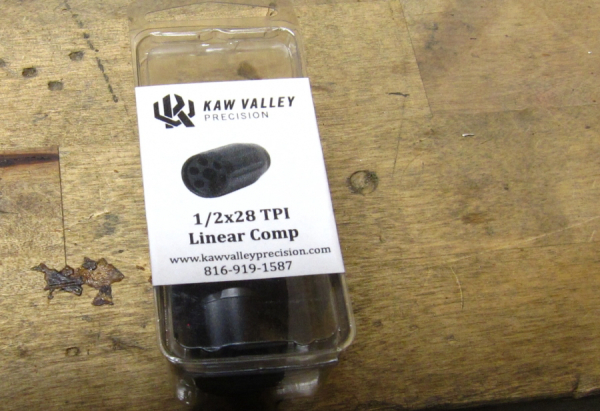
Recently, I covered the more recent of the AR pistols of my acquaintance here. It was the Ruger AR-556 pistol, a nice little blaster. I noticed little difference in firing it from past experience with ca-16” carbines of the same 5.56x45mm caliber, even with its 10 ½” barrel. After I’d written it up, I got a note from a correspondent – a close friend who I trust – about “linear compensators.”
Not having his permission to print his exact words, I’ll summarize his message. He said that the Kaw Valley Precision "linear comps" were tough to beat. Value priced, he’s installed them on AR carbines and the Ruger PC Carbine.
He shoots on an outdoor range with a covered firing point – a sound reflective steel roof. With the 9mm Ruger PCC, he can only hear the action work through his ear pro.
That’s impressive, though I’ve never considered the Ruger Pistol Caliber Carbine in 9mm to be blast-intensive. As Kaw Valley Precision is nearby, I contacted Ian Reel, the owner, about a meeting.
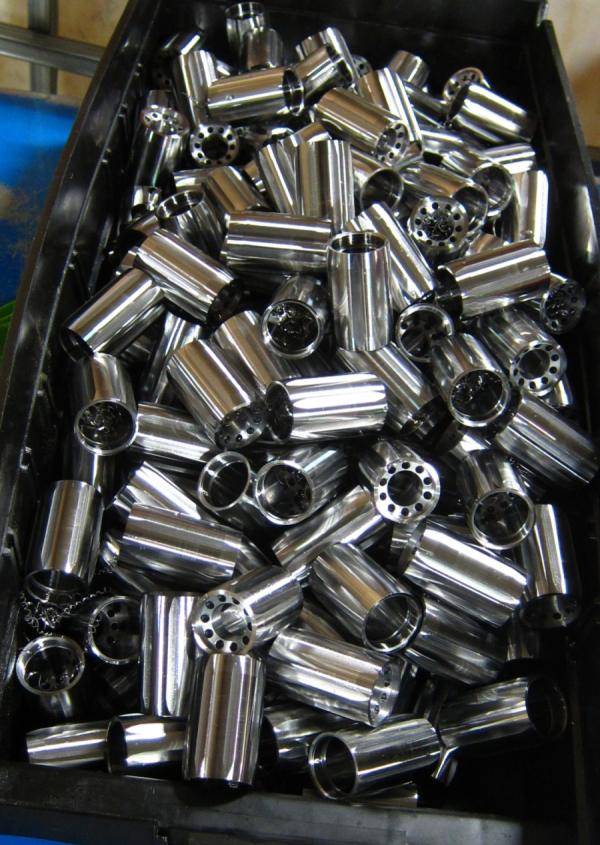
He has a new production facility, complete with new – and quite expensive CNC machines. It’s “lean,” with nearly no personnel.
He’s been in business for 6 years, starting out part-time as he worked his “day job.” Manufacturing has taken over and it’s a full time production facility now. His forward blast diverting muzzle device, a linear compensator, isn’t the first, but he’s fabricated one with a large expansion chamber and exhaust ports radially facing front – toward the target line.
The objective is to push the blast toward the recipient of the gunfire, not to push it to shooters on either side, angle it to the rear or up.
Ian’s position is that recoil isn’t the issue with gas-operated firearms; it’s the effects of blast impact on soft tissues. It’s not like Grand-dad’s long-barrel single shot goose gun; the gas- and recoil operation of semi-auto firearms will “bounce” but not “kick.”
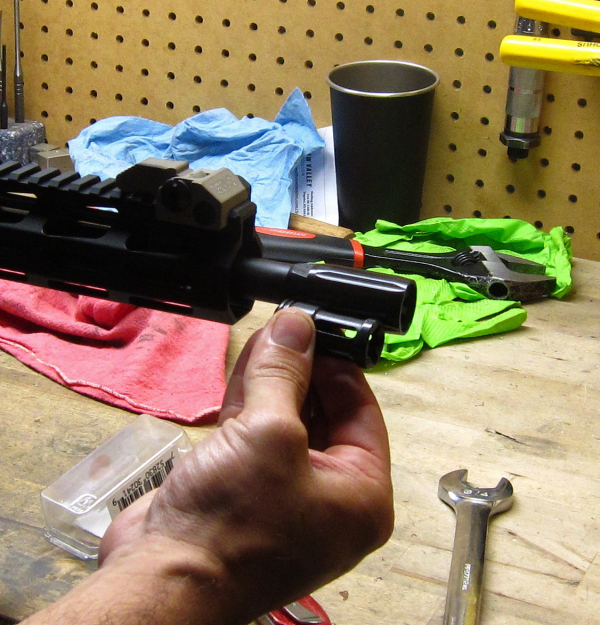
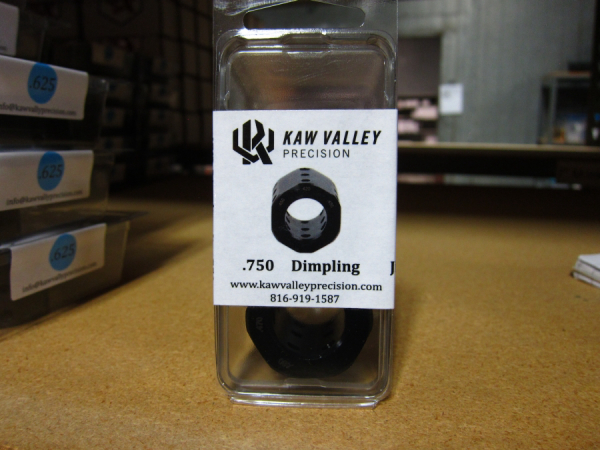
Linear compensators deal with blast mitigation – for the shooter, not the shootee. They don’t stop felt recoil – more on that later – nor do they minimize muzzle flash. They’re not suppressors, flash suppressors nor recoil-reducing muzzle brakes.
He’d done a demonstration for law enforcement to show how his linear comps would be helpful on patrol rifles – “SWAT guys get the good stuff; they get suppressors,” he said.
One of the coppers asked about muzzle flash giving away their positions. I was stunned; if you show up in a marked unit, with sirens, flashing lights, shiny badges and blaring radios, I figure the outlaws will know you’re there . . .
He fabricates metal parts – aluminum, stainless and carbon steel – in house. He also applies Cerakote to some items, while aluminum parts are sent out for anodizing and other steel parts are sent out for nitrite bath “melonite-“ types of finish.
Kaw Valley Precision isn’t one trick pony; aside from the blast diversion muzzle devices, he makes bolt carriers for pistol caliber carbines, buffer tubes, barrels, uppers/hand guards, thread adapters and protectors, lower parts and a neat tool -- a jig for dimpling a barrel to fit the gas block on AR-15 builds.
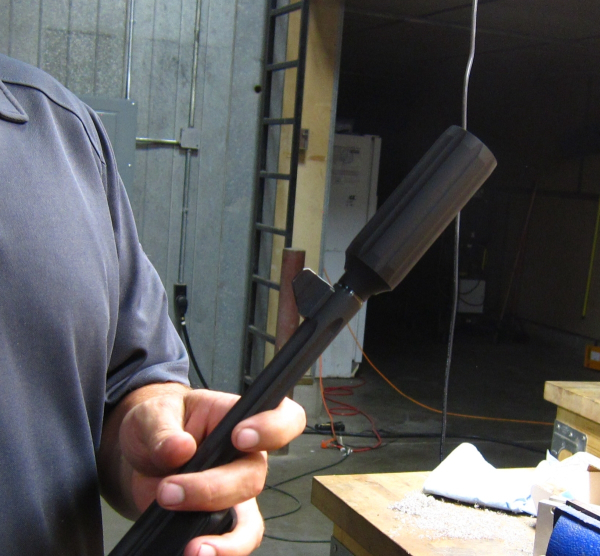
He installed a KVP Linear Comp on the Ruger AR-556 Pistol upper. It has the 1/2x28 TPI pattern and requires no crush washer. The muzzle device is machined with flats to ease installation. These things are wonderfully finished and easily installed.
Ian then took the Ruger PC Carbine barrel and installed his KVP 9mm XL Pistol Caliber Linear Comp. It’s huge, though not very heavy. It looks like the Hollywood perception of a silencer – but not like a real-world can.
Aluminum, weighing just over 3 ounces, it’s 4 ¼” long and is Black Type 3 Hardcoat Anodized. I couldn’t wait to check these out on the range.

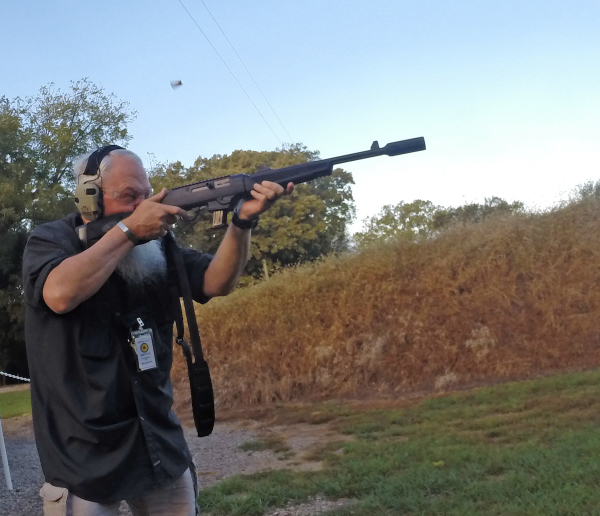
At the first opportunity, I got the guns assembled and hit the outdoor range early. It was overcast, but plenty of light to see downrange. I fired at fifty yards into a backstop of earth. I wore the same ear pro, Walker RAZOR digital, which I’d used with the AR-556 pistol and another of the same type.
The ammo for the Ruger AR pistol was Hornady Black 5.56 75 gr. Interlock HD SBR, a load I’d checked by chronograph at another range outing. It averaged 2,212 fps.
The 9mm Ruger PC Carbine shot an assortment of Black Hills 147 grain JHP, Ruger 65 grain ARX +P and Winchester 115 grain Silvertip.
Like my friend, I found the report from the PC Carbine to be extremely mild. In the amplified Walker RAZOR ear muffs, I could hear the PC’s spring returning the bolt to battery . . .
The AR-556 was less pronounced – much like the 7.5” Springfield Armory SAINT pistol with its forward-diverting blast device. Also like that gun, the torque one usually experiences in the firing sequence of the AR-15 was gone; the linear compensator creates a push directly to the rear – for some reason removing the usual twisting-recoil sensation.
Kaw Valley Precision is also an OEM provider of metal parts to some companies whose names you’d recognize – and Ian is open to more relationships of that nature.
Meanwhile, for the tinkerer/do-it-yourself gun type, KVP makes several parts to assist you, in AR builds in both rifle and pistol-caliber.
- - Rich Grassi
